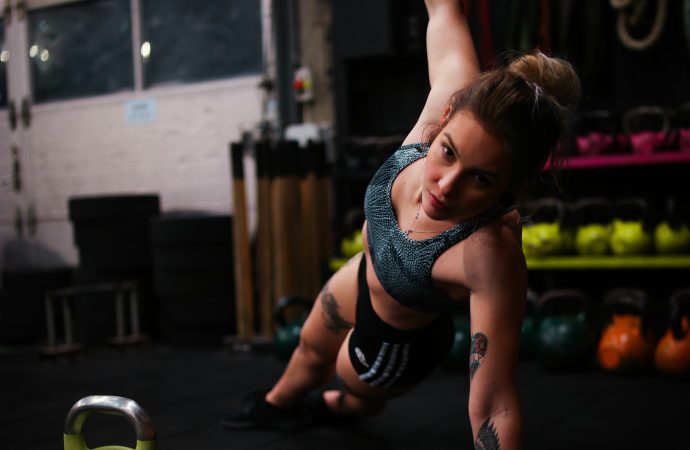Introduction: Flexibility plays a crucial role in athletic performance, regardless of the sport or discipline. Athletes who prioritize flexibility not only improve their overall performance but also reduce the risk of injuries. In this article, we explore the significance of flexibility for athletes, highlight key exercises and workouts that enhance flexibility, and emphasize the role
Introduction:
Flexibility plays a crucial role in athletic performance, regardless of the sport or discipline. Athletes who prioritize flexibility not only improve their overall performance but also reduce the risk of injuries. In this article, we explore the significance of flexibility for athletes, highlight key exercises and workouts that enhance flexibility, and emphasize the role of flexibility in preventing injuries.
Breaking News: The Impact of Flexibility on Athletic Performance
In recent years, the importance of flexibility in athletic performance has gained significant attention. Coaches, trainers, and athletes alike are recognizing that increased flexibility can lead to improved agility, power, speed, and range of motion. Flexibility training is no longer viewed as an optional component but rather as an integral part of an athlete’s overall training regimen.
Feature Story: Unlocking the Potential of Flexibility Workouts for Athletes
Flexibility workouts tailored to the specific needs of athletes can have a profound impact on their performance. Here are some key exercises and workouts that can enhance flexibility and contribute to improved athletic abilities:
1. Dynamic Stretching: Dynamic stretching involves moving joints and muscles through a full range of motion in a controlled and purposeful manner. This type of stretching is particularly beneficial for athletes as it activates the muscles, increases blood flow, and prepares the body for the specific movements required in their sport.
2. Active Isolated Stretching: Active Isolated Stretching (AIS) is a technique that targets specific muscle groups, gradually increasing the range of motion. Athletes can benefit from incorporating AIS into their flexibility routine as it helps improve flexibility without compromising muscle strength and stability.
3. Proprioceptive Neuromuscular Facilitation: Proprioceptive Neuromuscular Facilitation (PNF) is a stretching technique that involves a combination of stretching and contracting muscle groups. PNF stretching can enhance flexibility by stimulating the proprioceptors and improving the communication between the muscles and the nervous system.
4. Yoga for Athletes: Yoga combines stretching, strength-building, balance, and mindfulness, making it an excellent practice for athletes. Yoga poses and flows designed specifically for athletes can improve flexibility, core stability, body awareness, and mental focus.
Opinion Piece: The Injury Prevention Aspect of Flexibility Workouts
In addition to enhancing performance, flexibility workouts are essential for preventing injuries in athletes. Here’s why:
1. Improved Joint Mobility: Flexibility exercises increase joint mobility, allowing athletes to move more freely and efficiently. This reduces the risk of joint strain or hyperextension during dynamic movements, decreasing the likelihood of joint-related injuries.
2. Enhanced Muscle Elasticity: Flexible muscles are less prone to strains and tears. By regularly engaging in flexibility workouts, athletes can improve muscle elasticity, which enables them to withstand the demands of intense training and competition.
3. Balanced Muscle Development: Flexibility training helps athletes achieve balanced muscle development throughout their bodies. This balance prevents muscle imbalances that can lead to overuse injuries and postural issues.
Guide to Incorporating Flexibility Workouts into Athletic Training:
1. Assess Individual Needs: Athletes should assess their specific flexibility needs based on their sport, position, and individual strengths and weaknesses. Identifying areas that require improvement allows for targeted flexibility training.
2. Warm-Up Routine: Begin each training session or competition with a dynamic warm-up routine that incorporates dynamic stretching exercises. This helps prepare the body for the specific movements to follow.
3. Post-Workout Stretching: Allocate dedicated time at the end of training sessions for static stretching. This allows the muscles to relax, lengthen, and recover after intense exercise.
4. Regular Maintenance: Flexibility workouts should be
a regular part of an athlete’s training program. Consistency is key in maintaining and improving flexibility over time.
Research Techniques: Verifying Information and Uncovering Sources
To ensure accurate reporting on flexibility workouts for athletes, employing research techniques is essential. Here are strategies to verify information and uncover reliable sources:
1. Sports Science Research: Refer to peer-reviewed studies and research conducted by sports scientists and exercise physiologists. These sources provide evidence-based information on the effects of flexibility training on athletic performance and injury prevention.
2. Expert Interviews: Seek out interviews with sports trainers, strength and conditioning coaches, and sports medicine professionals. Their insights and expertise can provide valuable information on the best flexibility workouts for athletes.
3. Athlete Testimonials: Incorporate testimonials and anecdotes from athletes who have experienced the benefits of flexibility training firsthand. These personal accounts can offer real-life examples of the positive impact of flexibility on performance and injury prevention.
Adhering to Journalistic Ethics: Informative and Engaging Reporting
In delivering accurate reporting on flexibility workouts for athletes, adhering to journalistic ethics is fundamental. Here are key principles to follow:
1. Accuracy: Verify information from credible sources and provide proper attribution for factual claims.
2. Clarity: Use clear and concise language to explain the benefits and techniques of flexibility workouts for athletes. Provide step-by-step instructions and emphasize proper form and safety considerations.
3. Balance: Present a balanced perspective by discussing the benefits, potential limitations, and individualization of flexibility training for athletes. Acknowledge that individual needs and sport-specific requirements may vary.
4. Engaging Style: Employ an engaging writing style that captures the attention of athletes and sports enthusiasts. Use examples, anecdotes, and relatable stories to make the content relevant and motivating.
Conclusion
Flexibility workouts are a critical component of athletic training, offering numerous benefits to athletes in terms of performance enhancement and injury prevention. By incorporating dynamic stretching, active isolated stretching, PNF techniques, and yoga into their training routines, athletes can improve flexibility, joint mobility, muscle elasticity, and overall performance. Through diligent research, adherence to journalistic ethics, and accurate reporting, we hope to inspire athletes to prioritize flexibility and unlock their full potential on the field or court.























Leave a Comment
Your email address will not be published. Required fields are marked with *